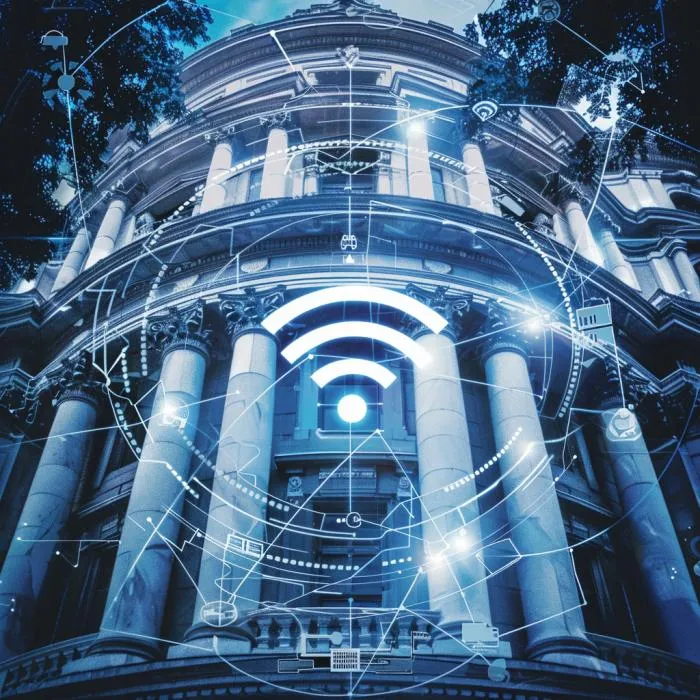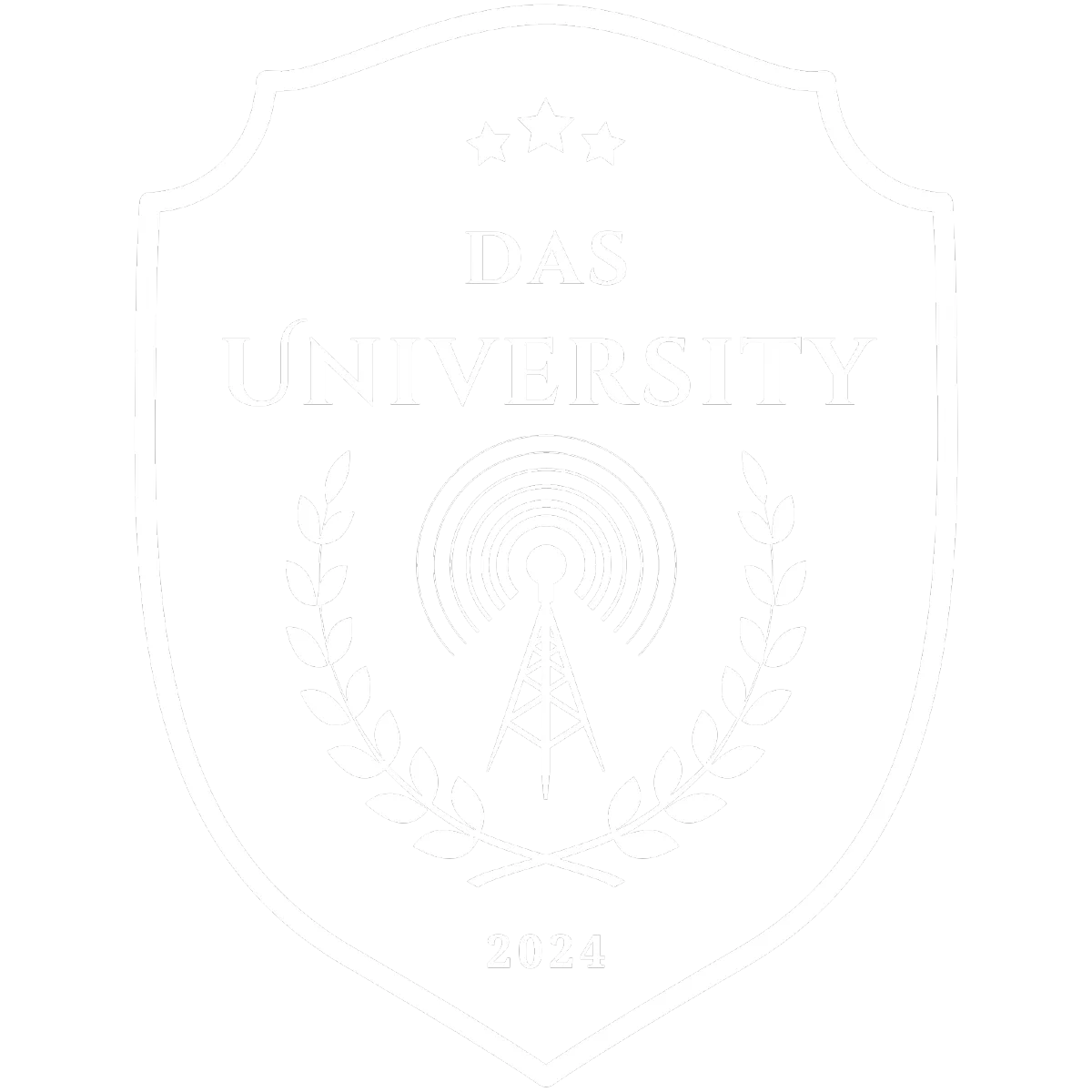Explore Our Unique Educational Platform
DAS University is dedicated to providing a comprehensive educational experience that combines theoretical knowledge with practical skills. Our unique approach includes interactive online platforms, real-world scenarios, and a global network of professionals, all designed to prepare you for success in the digital age.

Virtual Learning Environment
Step into our virtual learning spaces equipped with cutting-edge tools and resources. Experience live webinars, interactive courses, and real-time collaboration with peers and instructors, all tailored to enhance your understanding and engagement.

Professional Development
Elevate your career with our targeted programs that focus on industry-specific skills and certifications. Benefit from personalized career counseling, access to job placements, and a network of alumni that open doors to new opportunities.

Global and Inclusive Community
Join a diverse and inclusive community of learners and professionals from various backgrounds. Our multilingual support and 24/7 campus access ensure that everyone, everywhere can join and benefit from the DAS University experience.

15+Courses

15+
Mentors + Coachess

150+Members

About DAS University
Pioneering the Future of Education
At DAS University, we are committed to reshaping the educational landscape by integrating state-of-the-art technology with personalized learning experiences. Our mission is to empower students from around the globe with the skills and knowledge necessary to excel in the fast-evolving world of Distributed Antenna Systems (DAS) and beyond. Through a blend of expert-led courses, real-world applications, and a supportive community, we facilitate a journey of continuous learning and professional growth. Join us to transform your potential into success and become a leader in your field.
Achieve Premier Certifications at DAS University
Elevate your professional profile with our highly regarded certifications. Designed to provide both foundational and advanced knowledge, these programs prepare you for real-world challenges and significant career advancements in Distributed Antenna Systems and related technologies.
97% success rate in post-certification employment
Hands-on project submissions
Industry-recognized guest speakers
Collaboration with 30+ industry partners
Real-time system testing simulations
Access to exclusive ERCES webinars
150+ hours of intensive training
85% of graduates enhance their career within 6 months
Unlock Your Career Potential with DAS University Certifications
Our certifications do more than validate your knowledge—they open doors to new professional landscapes. Gain access to exclusive job placements, advanced career counseling, and a robust network of industry leaders ready to welcome you. Start your journey at DAS University and transform your professional future today.
Sign up now for FREE

Wireless Communication Challenges in Historical Buildings and How to Overcome Them
Historical buildings present unique challenges when it comes to implementing modern wireless communication systems. These structures, often constructed long before the advent of wireless technology, can significantly hinder signal propagation due to their design and materials. At DAS University, we recognize the importance of preserving the integrity of historical buildings while ensuring they meet contemporary communication needs. This blog post explores the wireless communication challenges faced in historical buildings and strategies to overcome them.
Challenges in Historical Buildings
Thick Walls and Dense Materials
Signal Obstruction: Many historical buildings are constructed with thick walls made of dense materials such as stone, brick, and concrete, which can significantly obstruct wireless signals.
Limited Penetration: These materials limit signal penetration, resulting in weak or non-existent coverage in certain areas.
Complex Layouts and Architecture
Intricate Designs: Historical buildings often feature complex architectural designs, including narrow corridors, high ceilings, and multiple floors, creating a challenging environment for signal distribution.
Dead Zones: The combination of thick walls and intricate layouts can create numerous dead zones where wireless signals cannot reach.
Preservation Requirements
Aesthetic and Structural Integrity: Preservation guidelines often restrict modifications to historical buildings, limiting the ability to install modern communication infrastructure.
Regulatory Compliance: Ensuring compliance with preservation regulations while implementing wireless solutions can be a delicate balance.
Electrical Interference
Outdated Wiring: Historical buildings may have outdated electrical wiring and infrastructure, leading to interference with modern wireless systems.
Limited Power Availability: The availability of power sources for wireless equipment can be restricted due to the building’s design and preservation constraints.
Strategies to Overcome Wireless Communication Challenges
Conduct a Thorough Site Survey
Assessment: Perform a detailed site survey to map out the building’s layout, identify signal obstruction points, and determine areas with weak or no coverage.
Customized Plan: Use the survey data to create a customized wireless communication plan that addresses the unique challenges of the historical building.
Utilize Distributed Antenna Systems (DAS)
Strategic Placement: DAS involves strategically placing multiple antennas throughout the building to ensure comprehensive coverage and eliminate dead zones.
Minimal Intrusion: DAS can be designed to minimize intrusion on the building’s aesthetics, with antennas and cabling concealed or integrated into existing structures.
Leverage Small Cells
Targeted Coverage: Small cells can be used to provide targeted coverage in specific areas with weak signals. These compact, low-power nodes are ideal for supplementing coverage in challenging environments.
Discreet Installation: Small cells can be discreetly installed in less visible locations to preserve the building’s historical appearance.
Employ Signal Boosters and Repeaters
Amplified Signals: Signal boosters and repeaters can amplify existing wireless signals, extending coverage to hard-to-reach areas within the building.
Non-Invasive Solutions: These devices can be installed with minimal disruption to the building’s structure and appearance.
Implement Fiber Optic Backbones
High Capacity: Fiber optic cables provide high-capacity, high-speed connectivity, serving as a backbone for wireless systems like DAS and small cells.
Flexible Routing: Fiber optic cables can be routed through existing conduits and spaces, reducing the need for intrusive installation.
Collaborate with Preservation Authorities
Early Engagement: Engage with preservation authorities early in the planning process to understand the specific regulations and guidelines that must be followed.
Collaborative Planning: Work collaboratively with these authorities to develop solutions that meet both preservation and communication needs, ensuring regulatory compliance.
Use Low-Profile and Aesthetic Equipment
Design Considerations: Choose wireless equipment designed to blend with the building’s aesthetics, such as low-profile antennas and camouflaged access points.
Hidden Installations: Wherever possible, install equipment in hidden or less visible areas to maintain the building’s historical appearance.
Regular Maintenance and Monitoring
Proactive Management: Implement a proactive maintenance schedule to ensure that the wireless communication systems remain operational and effective.
Continuous Monitoring: Use real-time monitoring tools to track system performance and quickly address any issues that arise.
Case Study: Successful Wireless Implementation in a Historical Building
Consider a historical museum that faced significant challenges in implementing wireless communication due to its thick stone walls and intricate architectural design. By conducting a thorough site survey and collaborating with preservation authorities, the museum was able to implement a DAS solution with strategically placed antennas and fiber optic backbones. The result was comprehensive wireless coverage throughout the museum, allowing visitors and staff to stay connected without compromising the building’s historical integrity. Discreet installation techniques ensured that the wireless equipment was virtually invisible, preserving the museum’s aesthetic appeal.
Conclusion
Implementing wireless communication systems in historical buildings presents unique challenges, but with the right strategies, these challenges can be effectively overcome. By leveraging technologies such as DAS, small cells, and signal boosters, and by collaborating with preservation authorities, it is possible to ensure reliable wireless coverage while preserving the building’s historical integrity. At DAS University, we are dedicated to educating professionals on these advanced solutions, preparing them to tackle the complexities of modernizing historical buildings with wireless communication. Join us to learn more about enhancing connectivity in historical structures and become a leader in this specialized field.
Hear Directly from Our Students: Real Stories, Real Success
Discover the impact of DAS University through the voices of our students. From groundbreaking education to career breakthroughs, our learners share their journeys and the transformative experiences they've encountered.

DAS University not only taught me the technical skills needed for advanced DAS systems but also how to apply them effectively in real-world scenarios. The network I’ve built through the university’s alumni connections has opened up numerous opportunities for collaboration and growth.

Raj Patel

The DAS certification has been a game-changer for my career. The practical knowledge and hands-on training I received have allowed me to transition into a higher role within my company. The support and expert advice from faculty were invaluable.

Emily Nguyen

Enrolling at DAS University was one of the best decisions I've made for my professional development. The interactive courses and live sessions with industry experts have greatly enhanced my understanding and confidence in handling complex projects in my field.

Albert Dubois
Start Your Journey at DAS University Today
Embark on a path of discovery and professional growth with our cutting-edge courses and vibrant academic community. At DAS University, we equip you with the tools and connections to not just meet but exceed your career aspirations. Join us and turn your potential into achievement.
Our Latest Articles

Wireless Communication Challenges in Historical Buildings and How to Overcome Them
Historical buildings present unique challenges when it comes to implementing modern wireless communication systems. These structures, often constructed long before the advent of wireless technology, can significantly hinder signal propagation due to their design and materials. At DAS University, we recognize the importance of preserving the integrity of historical buildings while ensuring they meet contemporary communication needs. This blog post explores the wireless communication challenges faced in historical buildings and strategies to overcome them.
Challenges in Historical Buildings
Thick Walls and Dense Materials
Signal Obstruction: Many historical buildings are constructed with thick walls made of dense materials such as stone, brick, and concrete, which can significantly obstruct wireless signals.
Limited Penetration: These materials limit signal penetration, resulting in weak or non-existent coverage in certain areas.
Complex Layouts and Architecture
Intricate Designs: Historical buildings often feature complex architectural designs, including narrow corridors, high ceilings, and multiple floors, creating a challenging environment for signal distribution.
Dead Zones: The combination of thick walls and intricate layouts can create numerous dead zones where wireless signals cannot reach.
Preservation Requirements
Aesthetic and Structural Integrity: Preservation guidelines often restrict modifications to historical buildings, limiting the ability to install modern communication infrastructure.
Regulatory Compliance: Ensuring compliance with preservation regulations while implementing wireless solutions can be a delicate balance.
Electrical Interference
Outdated Wiring: Historical buildings may have outdated electrical wiring and infrastructure, leading to interference with modern wireless systems.
Limited Power Availability: The availability of power sources for wireless equipment can be restricted due to the building’s design and preservation constraints.
Strategies to Overcome Wireless Communication Challenges
Conduct a Thorough Site Survey
Assessment: Perform a detailed site survey to map out the building’s layout, identify signal obstruction points, and determine areas with weak or no coverage.
Customized Plan: Use the survey data to create a customized wireless communication plan that addresses the unique challenges of the historical building.
Utilize Distributed Antenna Systems (DAS)
Strategic Placement: DAS involves strategically placing multiple antennas throughout the building to ensure comprehensive coverage and eliminate dead zones.
Minimal Intrusion: DAS can be designed to minimize intrusion on the building’s aesthetics, with antennas and cabling concealed or integrated into existing structures.
Leverage Small Cells
Targeted Coverage: Small cells can be used to provide targeted coverage in specific areas with weak signals. These compact, low-power nodes are ideal for supplementing coverage in challenging environments.
Discreet Installation: Small cells can be discreetly installed in less visible locations to preserve the building’s historical appearance.
Employ Signal Boosters and Repeaters
Amplified Signals: Signal boosters and repeaters can amplify existing wireless signals, extending coverage to hard-to-reach areas within the building.
Non-Invasive Solutions: These devices can be installed with minimal disruption to the building’s structure and appearance.
Implement Fiber Optic Backbones
High Capacity: Fiber optic cables provide high-capacity, high-speed connectivity, serving as a backbone for wireless systems like DAS and small cells.
Flexible Routing: Fiber optic cables can be routed through existing conduits and spaces, reducing the need for intrusive installation.
Collaborate with Preservation Authorities
Early Engagement: Engage with preservation authorities early in the planning process to understand the specific regulations and guidelines that must be followed.
Collaborative Planning: Work collaboratively with these authorities to develop solutions that meet both preservation and communication needs, ensuring regulatory compliance.
Use Low-Profile and Aesthetic Equipment
Design Considerations: Choose wireless equipment designed to blend with the building’s aesthetics, such as low-profile antennas and camouflaged access points.
Hidden Installations: Wherever possible, install equipment in hidden or less visible areas to maintain the building’s historical appearance.
Regular Maintenance and Monitoring
Proactive Management: Implement a proactive maintenance schedule to ensure that the wireless communication systems remain operational and effective.
Continuous Monitoring: Use real-time monitoring tools to track system performance and quickly address any issues that arise.
Case Study: Successful Wireless Implementation in a Historical Building
Consider a historical museum that faced significant challenges in implementing wireless communication due to its thick stone walls and intricate architectural design. By conducting a thorough site survey and collaborating with preservation authorities, the museum was able to implement a DAS solution with strategically placed antennas and fiber optic backbones. The result was comprehensive wireless coverage throughout the museum, allowing visitors and staff to stay connected without compromising the building’s historical integrity. Discreet installation techniques ensured that the wireless equipment was virtually invisible, preserving the museum’s aesthetic appeal.
Conclusion
Implementing wireless communication systems in historical buildings presents unique challenges, but with the right strategies, these challenges can be effectively overcome. By leveraging technologies such as DAS, small cells, and signal boosters, and by collaborating with preservation authorities, it is possible to ensure reliable wireless coverage while preserving the building’s historical integrity. At DAS University, we are dedicated to educating professionals on these advanced solutions, preparing them to tackle the complexities of modernizing historical buildings with wireless communication. Join us to learn more about enhancing connectivity in historical structures and become a leader in this specialized field.
Frequently Asked Questions
What makes DAS University different from traditional educational institutions?
DAS University combines expert-led courses, dynamic online interactions, and live events to create a comprehensive and interactive learning experience that goes beyond traditional classroom boundaries.
How does the subscription model work at DAS University?
Our subscription model offers unlimited access to all courses and resources on the platform, allowing students to learn at their own pace and according to their own schedules. Enjoy a FREE version and premium version
What types of courses does DAS University offer?
We offer a wide range of courses focused on Distributed Antenna Systems (DAS), including basics of radio frequency, system design, and emergency responder communication enhancement systems, among others.
Can I interact directly with instructors and guest speakers?
Yes, our platform includes real-time chat, discussion forums, and weekly live Zoom sessions where students can engage directly with instructors and industry experts.
What are the career opportunities after completing courses at DAS University?
Completing courses at DAS University can lead to various roles in the DAS industry, such as system integrator, radio technician, and various positions in emergency response, depending on the course.
How do I access the digital library?
The digital library is available through the Campus portal, where students can access research papers, case studies, e-books, and multimedia resources related to their courses.
What is included in the certification from DAS University?
Certifications include your name, course title, completion date, unique certification number, and are recognized by industry partners, enhancing your professional credibility. This is only available in the Premium version.
How can I participate in special interest groups and clubs?
Students can join various groups and clubs through the Campus portal, allowing them to connect with peers who share similar interests and professional goals. Premium Version only
Are there resources for hands-on learning in DAS University courses?
Yes, we provide simulation tools and virtual labs for hands-on experience, as well as gamified learning modules to make complex concepts more engaging. Only available in the Premium version.
What support is available if I encounter difficulties in my coursework?
The Feedback and Support Center offers direct access to faculty and technical support to assist with any course-related inquiries.
How does DAS University accommodate international students?
We offer 24/7 campus access and multilingual support to ensure that students from all time zones and linguistic backgrounds can fully participate.
What is the process for obtaining certification at DAS University?
To obtain certification, students must complete all modules, pass the final assessment with a required minimum score, and actively participate in live sessions and forums. Only available in the Premium version.
Can I share my certification on professional networks?
Yes, upon completion, students receive both a physical certificate and a digital badge that can be shared on LinkedIn and other professional networks. Only available in the Premium version.
What are the live webinar auditoriums used for?
The auditoriums host weekly live sessions with guest speakers and industry experts, featuring interactive Q&A sessions and panel discussions.
What tools are available for career development at DAS University?
Our Career Center provides career counseling, resume workshops, job postings, and an alumni network for mentorship and professional connections. Only available in the Premium version.
How can I track my course progress and assessments?
The Certification Portal on our platform allows students to track their progress, assessments, and certification status.
What kind of assessments are used in DAS University courses?
Assessments include quizzes, assignments, project submissions, and a final examination to comprehensively test understanding and practical application.
How can I continue learning after completing my courses?
Certificate holders are encouraged to participate in advanced courses, seminars, and periodic refresher courses to keep their knowledge current.
Are there opportunities for networking within the DAS University community?
Yes, certification grants access to an exclusive alumni network, facilitating peer interactions, knowledge sharing, and networking opportunities. Only available in the Premium version.
How do I provide feedback on my learning experience?
Students can provide feedback through forums in the Feedback and Support Center, helping us to continually improve the campus experience.




